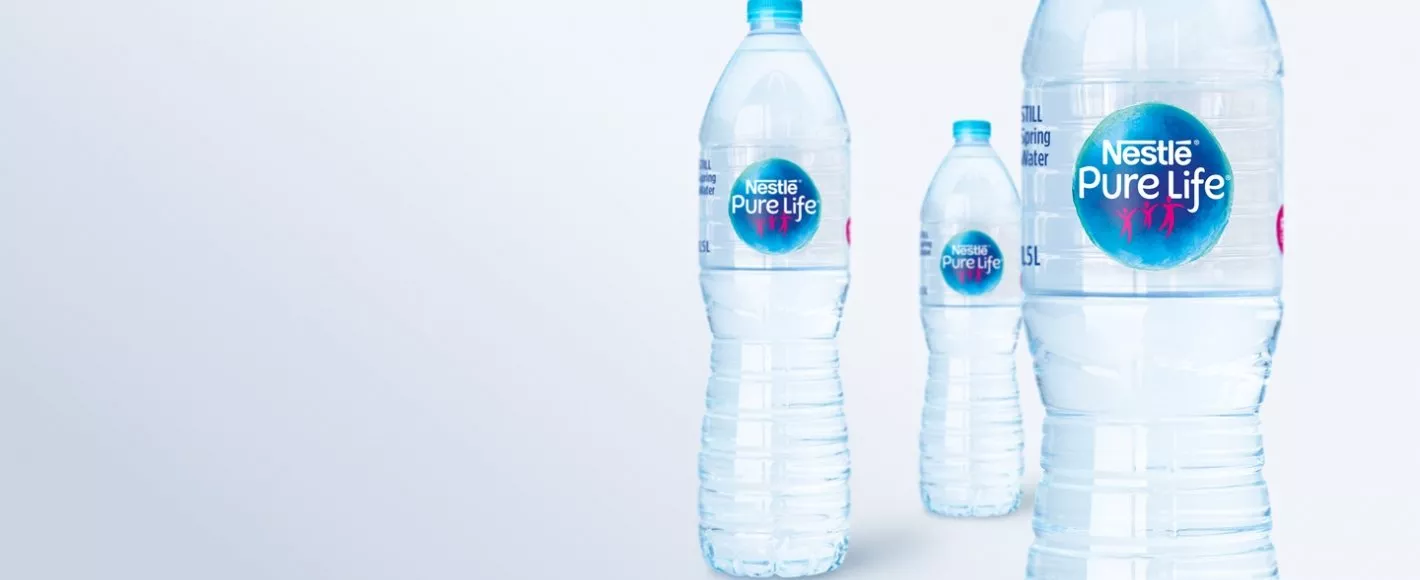
About Bottles and Storage
How long can I keep spring source water once opened?
We suggest the water is consumed within 3 days. Once it is opened, bacteria can enter the water and it may taste stale after a few days. There is no safety risk.
How should I store my natural source water?
Keep your bottle of Nestlé® Pure Life® somewhere dry and odour-free. It should be stored at room temperature or below. Your water can also be stored in the fridge. Keep it away from solvents and chemicals, and away from direct sunlight, to help preserve its great taste.
Can I freeze my natural source water?
While your Nestlé® Pure Life® bottle is not designed to be frozen, it is safe to do so.
Is the plastic in Nestlé® Pure Life® bottles recycled?
All our bottles are 100% recyclable and currently contain up to 20% recycled PET plastic. We are working hard to increase our use of recycled plastic but there are many challenges to achieving this. The material we use needs to be high-quality food grade and a domestic, UK supply of rPET is still relatively limited. At present, there is insufficient infrastructure available at scale in this country to create the volumes needed.
What are you doing to increase the amount of recycled plastic available?
The material we use needs to be high-quality food grade and a domestic, UK supply of rPET is still relatively limited. We’re working with industry partners, non-governmental organisations and government to improve national recycling rates, supporting the UK-wide Deposit Return Scheme and engaging with consumers about recycling to help make a circular economy for plastics in the UK a reality.
Can I reuse my water bottle?
Nestlé® Pure Life® is packaged in materials that are designed for recycling, so that they can be re-used and made into other bottles or other products. Re-filling empty containers is not advised for hygiene purposes. Please recycle your bottle once you have finished with it.
What are micro-plastics and where can we find them?
Micro-plastics are small plastic particles which are either manufactured to be that size or which originate from the breakdown of larger plastic debris found in the environment. Micro-plastics originate from many sources, including machinery and equipment, synthetic clothing fibers, dust from tires, road paints and the breakdown of larger items.
Why are Nestlé® Pure Life® bottles so thin?
We have always led with commitments to reduce the amount of plastic used in our packaging and in 2012 we changed to a lighter weight plastic bottle. This has resulted in the removal of 10,825 tonnes of plastic from the NPL range between 2012 – 2019. But don’t worry - lighter bottles are still designed to keep your Nestlé® Pure Life® water in perfect condition until you are ready to drink it and easy to recycle when you have finished with it.
Are Nestlé® Pure Life® bottles recyclable?
Nestlé® Pure Life® bottles are all 100% recyclable, including the cap and the label. Our PET bottles are widely recycled across the UK, including through your kerbside recycling collection at home. Just make sure your Nestlé® Pure Life® bottle is empty before you put it in the recycling. Remember to screw the cap back on too. You can read more about recycling our water bottles here.
How many times can bottles be recycled ?
Nestlé® Pure Life® bottles are 100% recyclable, including the cap and the label. When recycled, bottles can go on to have another life and be recycled many times.
What is rPET (Recycled PET?)
RPET stands for ‘Recycled PET’, or ‘Recycled Polyethylene Terephthalate’. This plastic has been made from recycled PET packaging that has been recovered and reprocessed. It is completely safe to use. This means that your bottle is not made from virgin plastic PET. Our 250ml and 1L bottles are currently made from 100% rPET.
My Nestlé® Pure Life® is leaking but the seal and lid do not seem to be damaged.
We’re very sorry to hear your bottle is leaking. Please contact our Consumer Services team here.
